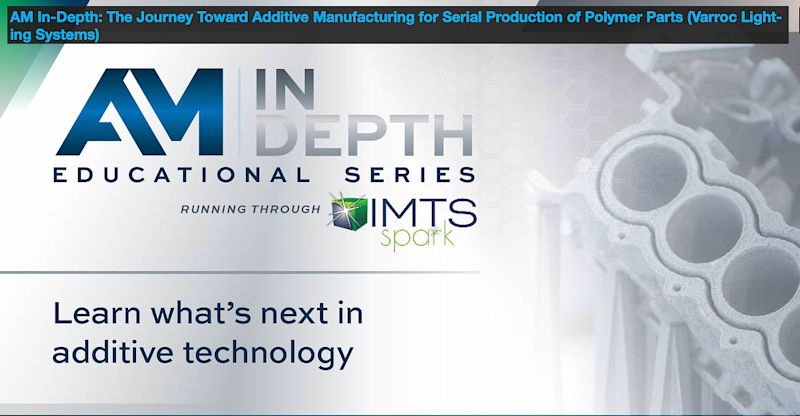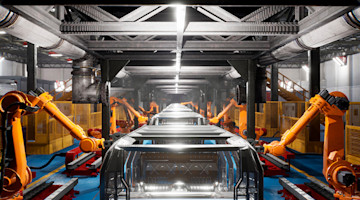For any company thinking of dipping their toes into additive manufacturing (AM) to see if it makes sense for their business, this IMTS spark presentation is not to be missed. In “The Journey Toward AM for Serial Production of Polymer Parts: Opportunities and Challenges for an Automotive Lighting Sector,” Dylan Schickel, head of manufacturing innovation at Varroc Lighting Systems, discusses how his company got started with AM parts in 2017. Schickel explains the challenges that Varroc, a tier-one global manufacturer of exterior lighting systems in the automotive market, faced, key lessons they learned, and offers “advice for the uninitiated.”
Schickel strongly recommends that anyone interested in AM begin by educating themselves through industry conferences, educational sessions, and organizations like the AM Users Group (AMUG) in order to get honest assessments and stay away from marketing hype. There is also no substitute for talking to people currently doing AM.
A few key takeaways from his presentation are his overview of how to evaluate the four main categories of polymer printing – plastic extrusion, powder processes, liquid photo-polymerization, and material jetting – and the type of materials required for each. He then looks at the strengths and weaknesses of the AM polymer print processes from the perspective of several metrics – cost, speed, resolution, material selection, process movement, layer transitions, thermal challenges, and more.
Another important message he stresses is that there is no substitute for getting your hands dirty and experimenting with a basic printer, and he discusses the types of things you can do and learn working with an entry-level printer. He recommends jigs and fixtures as good entry-level projects. Varroc started with printing mechanical brackets.
Schickel goes on to explain how there is no direct substitution between AM and injection molding, and he compares parts made with both for specific attributes Varroc required – speed, dimensional accuracy, feature definition, material economics, material durability, and surface finish. He also compares several different AM processes in terms of specific attributes and discusses the critical importance of DFAM – design for additive manufacturing – and takes us through Varroc’s process for designing specific parts.
Lastly, he talks about the value of working with a well-resourced partner and overviews the lighthouse project that Varroc collaboratively developed with Ford, the results they obtained, and what they learned in the process.
For more information or to view this session on demand, simply log on to IMTS spark and search for the title or click here.






